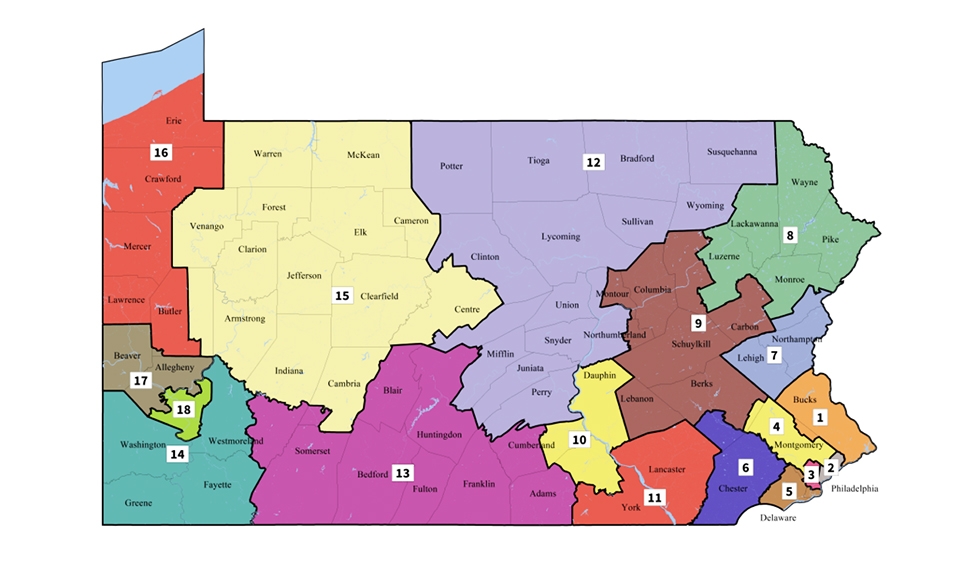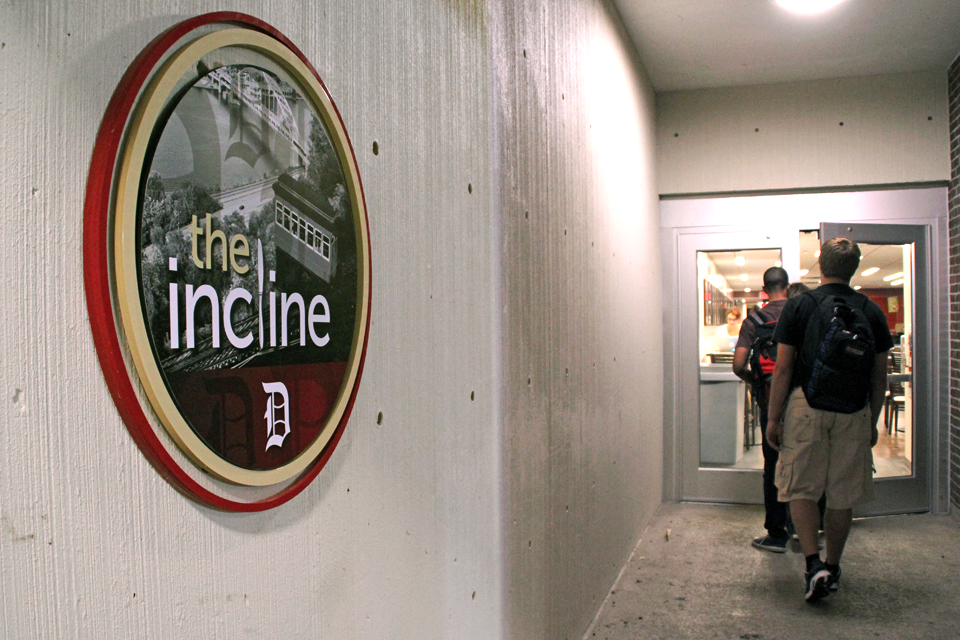
The newly drawn map of Pennsylvania's congressional districts.
Raymond Arke | Editor-in-Chief
11/08/18
A new congressional district map led to big changes in Pennsylvania’s delegation to the U.S. House of Representatives in the 2018 midterms.
In March, the Pennsylvania Supreme Court ruled that the old map, drawn by Republican legislators in 2012, was unconstitutionally gerrymandered. After Pennsylvania’s legislature couldn’t draw a new map within the court-ordered time frame, the Pennsylvania Supreme Court redrew the boundaries, creating districts that divided counties less and removed large, sprawling districts — some of which had attracted national infamy (see: “Goofy kicking Donald Duck”). The new map, in place for yesterday’s midterm elections, produced a pick-up of four seats for Democrats, along with many more close races. After the Nov. 6 election, the Pennsylvanians headed to the U.S. House are composed of nine Democrats and nine Republicans.
In Western Pennsylvania, the map created a new District 17, composed of Pittsburgh suburbs. Conor Lamb (D-17), an incumbent who had won a March special election in the old map’s District 18, was placed in the 17th to face Keith Rothfus (R-17), who was the incumbent of the old map’s District 12. Lamb produced a commanding win on Nov. 6, defeating Rothfus 56.1 percent to 43.9 percent, according to the New York Times.
The other Democratic pickups in the new map came in suburban Philadelphia and Allentown. Outside of Philadelphia, the newly redrawn District 6 and District 5 saw the victories of Chrissy Houlahan (D-06) and Mary Gay Scanlon (D-05). District 7, which included Allentown in northeastern Pennsylvania, also became a Democratic flip with the victory of Susan Wild (D-07). The three women, along with Madeline Dean (D-04), who won in a safe Democratic district, set a record for the number of women in Pennsylvania’s delegation to the U.S. House. Previously, Pennsylvania had never elected more than two.
The map also produced a Republican flip in southwestern Pennsylvania. Guy Reschenthaler (R-14), a former state senator, won a race for an open seat in the newly drawn District 14 over Democrat Bibiana Boerio. The old District 14 had been represented by Rep. Michael Doyle (D-18), who was placed in a different district under the new lines.
The redistricting also produced close races in several of the other districts between Republican incumbents and Democratic challengers. In PA-10, which includes Harrisburg, incumbent Scott Perry (R-10) narrowly held off a challenge from George Scott, a moderate Democrat. Perry prevailed with little over 2 percent of the vote, according to the New York Times. In northwestern Pennsylvania, another Republican incumbent, Mike Kelly (R-16), produced a close victory over Ron DiNicola (D) in District 16. Back out in eastern Pennsylvania, incumbent Republican Brian Fitzpatrick (R-01) prevailed over Scott Wallace (D) with 2 percent of the vote, according to the New York Times.
Going forward, it appears that Pennsylvania’s congressional districts will continue with a Democratic lean until the next redistricting process.




